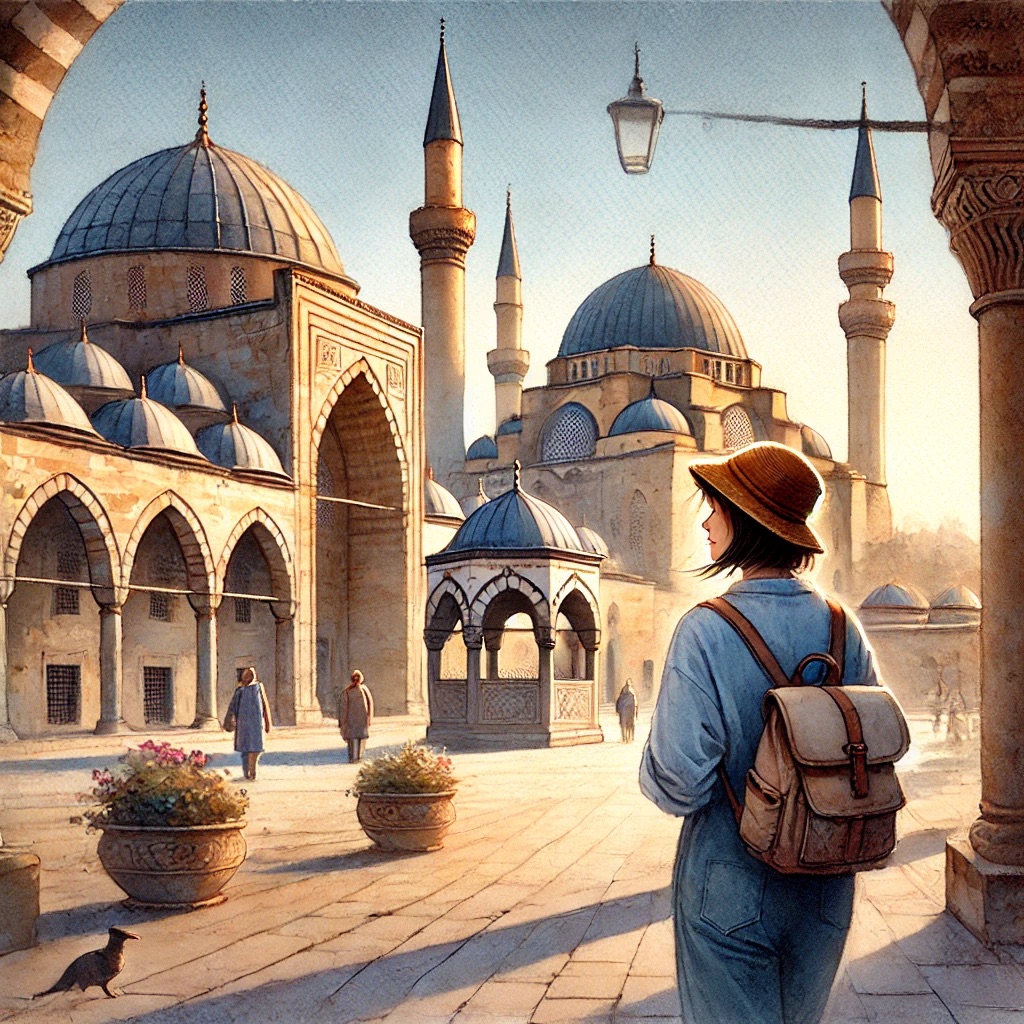Origin and Early History
Konya, one of the oldest cities in the world, has a history that dates back to ancient times. The area was originally settled during the Late Neolithic period, around 3000 BCE. Archaeological findings in the region, particularly at the nearby site of Çatalhöyük, indicate the presence of advanced Neolithic civilizations.
Classical Antiquity
During the Classical period, Konya was known as Iconium. It was an important city in the Phrygian region and later became a part of the Hellenistic world following the conquests of Alexander the Great. The city was subsequently integrated into the Roman Empire, becoming a significant urban center in the province of Galatia.
Byzantine Era
Under the Byzantine Empire, Konya continued to thrive as a strategic and economic hub. It was fortified and served as an important defense point against various invasions. The city also became a center for early Christianity, with several churches and religious institutions established during this period.
Seljuk Era
Konya’s most notable development occurred during the Seljuk period. In the late 11th century, the city was captured by the Seljuk Turks and became the capital of the Sultanate of Rum in the 12th century. This era marked a golden age for Konya, with significant architectural and cultural advancements. The city was adorned with mosques, madrasas, and palaces, many of which still stand today. Konya also became a center of Islamic learning and culture.
Association with Rumi
In the 13th century, Konya became renowned as the home of Jalal ad-Din Muhammad Rumi, also known as Mevlana. Rumi’s teachings and the establishment of the Mevlevi Order, known for the whirling dervishes, greatly influenced the city’s spiritual and cultural life. The Mevlana Museum, which houses Rumi’s mausoleum, remains a major pilgrimage site.
Ottoman Period
After the decline of the Seljuks, Konya came under the control of the Karamanids and later the Ottoman Empire in the late 15th century. During the Ottoman era, Konya retained its status as an important regional center. It saw further architectural developments and continued to be a hub for trade and agriculture.
Modern Era
In the 20th century, with the establishment of the Republic of Turkey, Konya underwent significant modernization and development. It became a key economic and industrial center, known for its agricultural production and manufacturing industries. The city’s infrastructure improved, with new educational institutions, transportation networks, and urban developments.
Contemporary Konya
Today, Konya is a blend of ancient heritage and modern growth. It continues to be a major cultural and economic hub in Turkey, attracting tourists and scholars alike. The city’s historical sites, cultural festivals, and modern amenities make it a unique destination that bridges the past and the present.
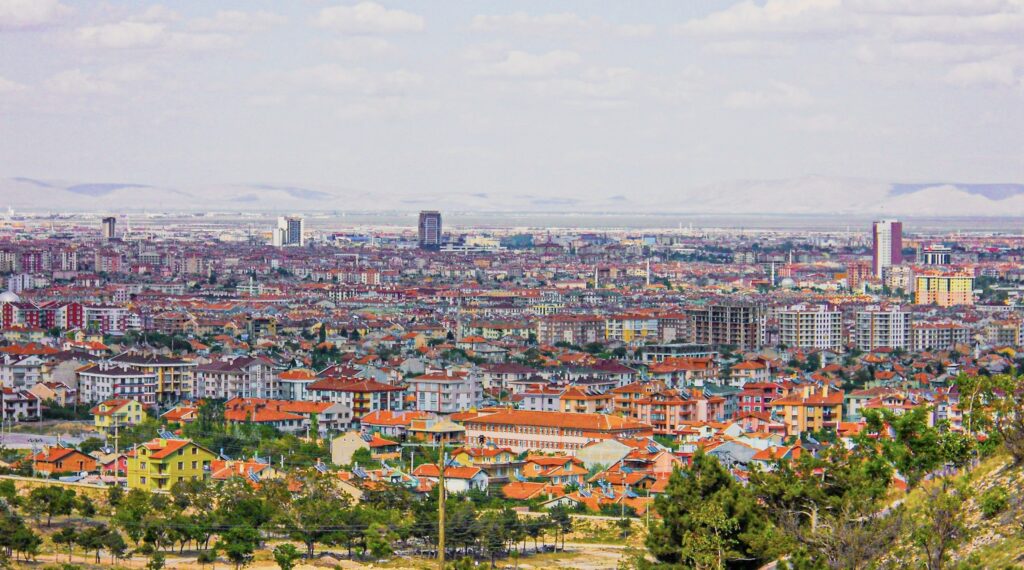
Konya is rich in historical monuments and tourist attractions, showcasing its diverse cultural and historical heritage. Here are some of the key sites:
Historical Monuments
- Mevlana Museum: The former lodge of the whirling dervishes and the mausoleum of the Sufi mystic Jalal ad-Din Muhammad Rumi (Mevlana).
- Alaeddin Mosque: One of the oldest mosques in Turkey, built during the Seljuk period.
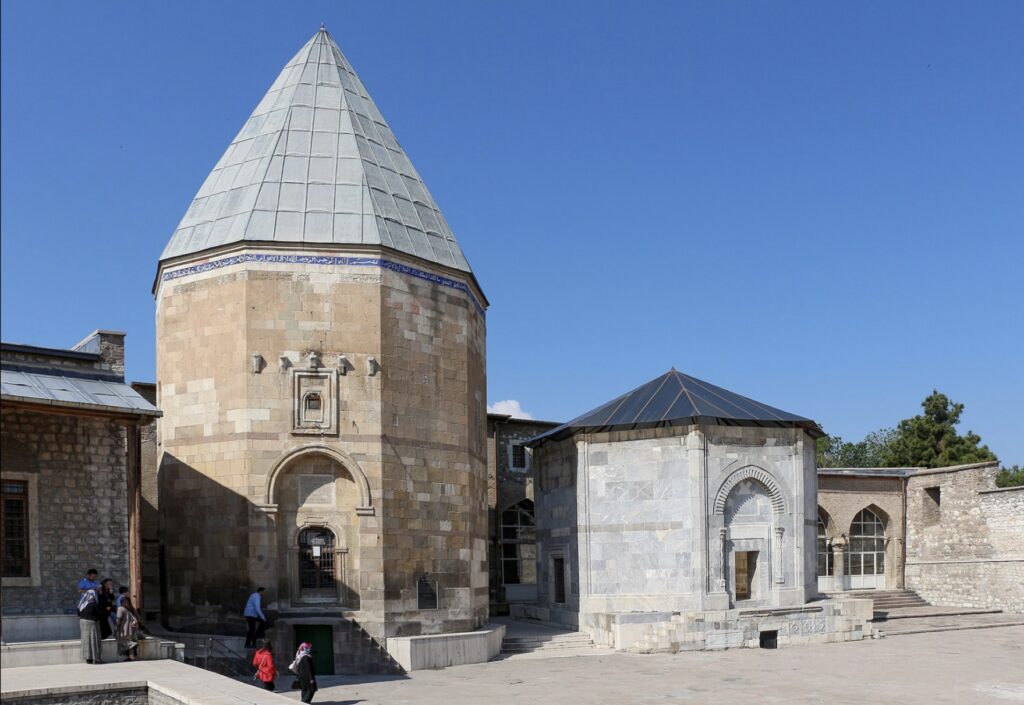
- Ince Minaret Medrese: A former Islamic school famous for its intricately carved minaret, now a museum.
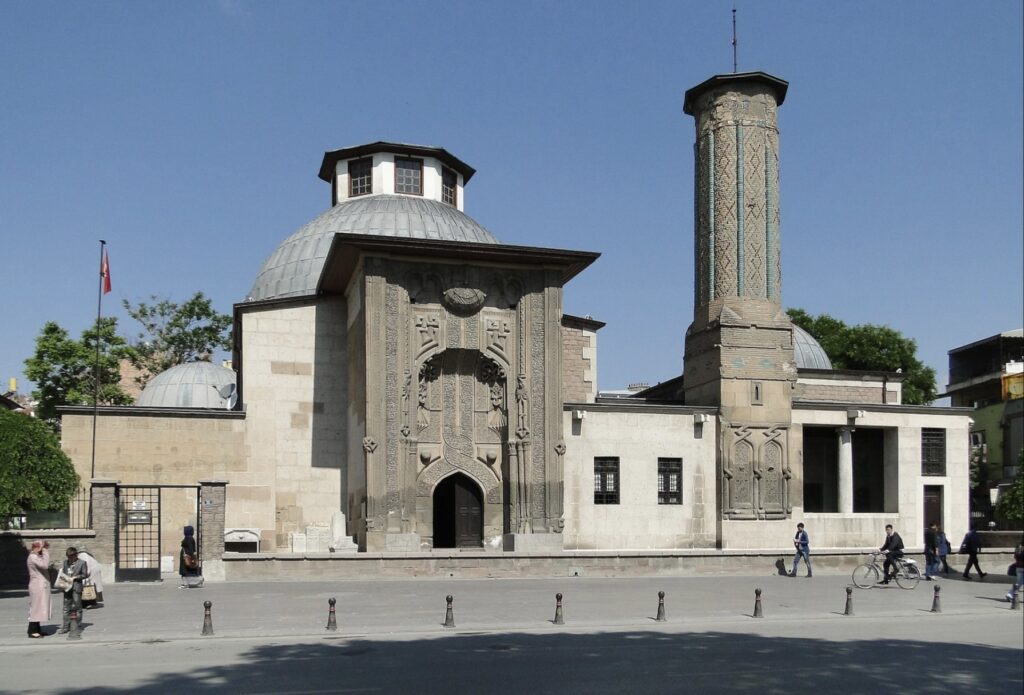
- Karatay Medrese: A Seljuk-era theological school, now serving as a museum with displays of Seljuk ceramics and artifacts.
- Sahip Ata Mosque and Complex: A significant Seljuk architectural complex that includes a mosque, a tomb, and a bathhouse.
- Sille Subaşı Village: An ancient village with a history that predates Christianity, known for its rock-carved churches and monasteries.
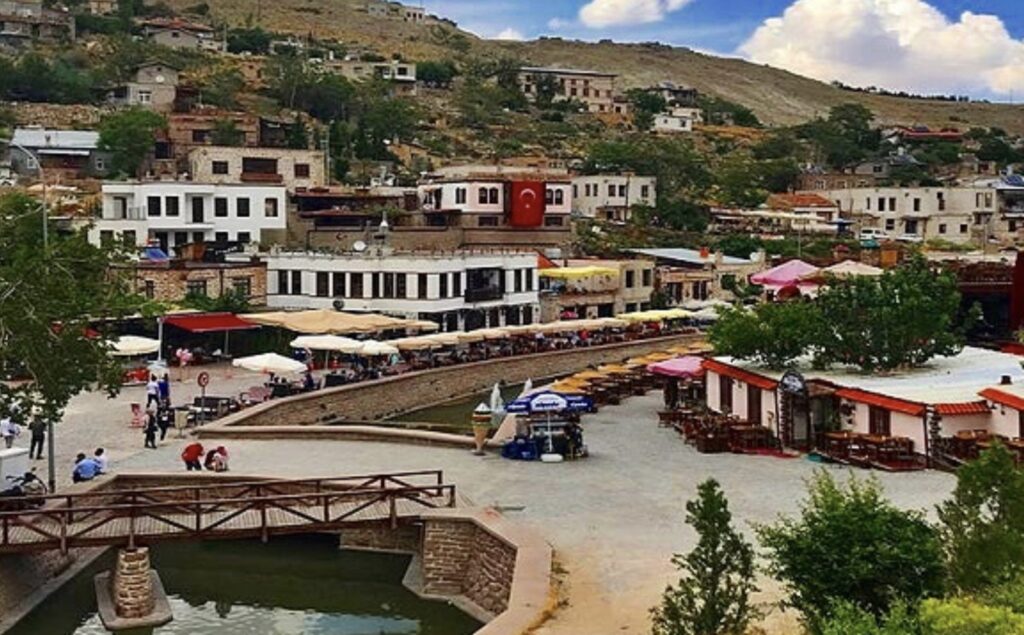
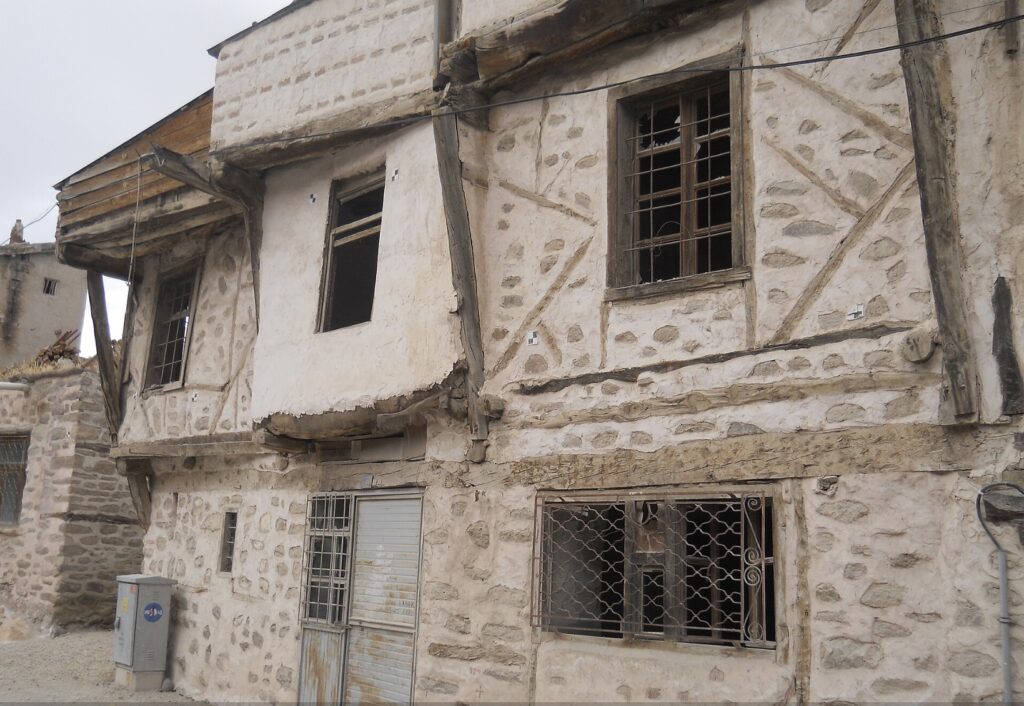
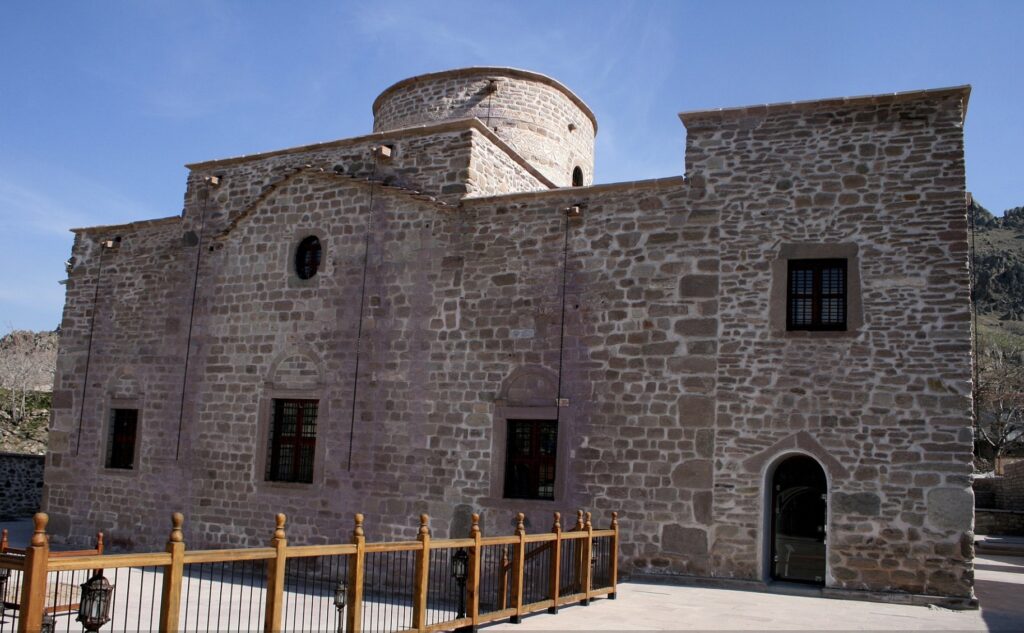
- Çatalhöyük: One of the world’s oldest known urban settlements, a Neolithic site that provides insights into early human civilization.
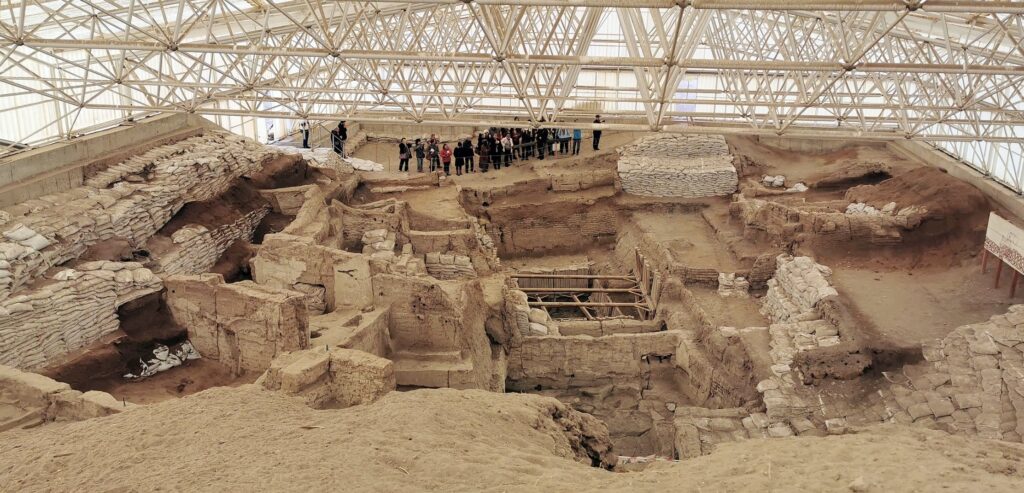
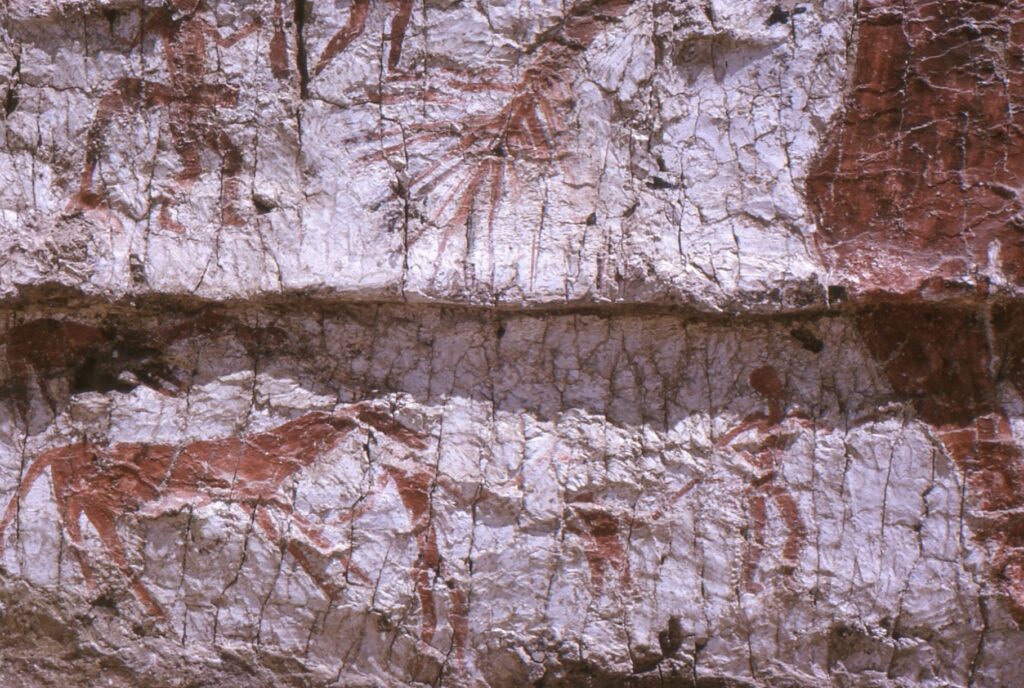
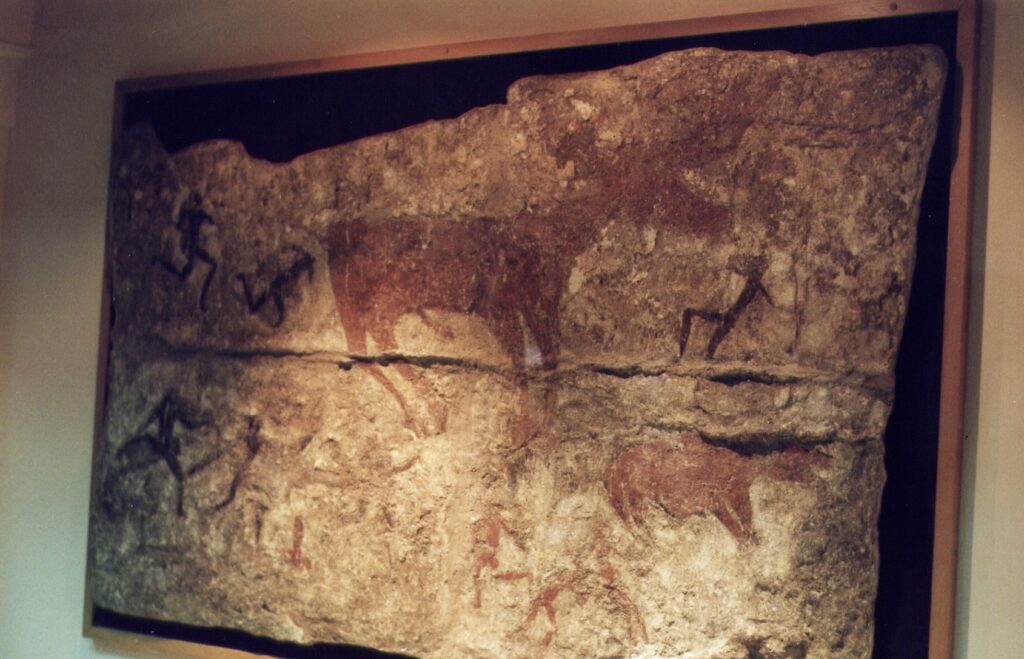
Tourist Attractions
- Tropikal Kelebek Bahçesi (Tropical Butterfly Garden): A large butterfly garden with diverse species and a tropical environment.
- Konya Archaeological Museum: Displays artifacts from Konya’s rich history, including items from the Neolithic, Bronze Age, and Roman periods.
- Ethnography Museum: Showcases traditional Turkish arts, crafts, and daily life artifacts.
- Konya Science Center: A modern science museum with interactive exhibits and educational programs.
- Aziziye Mosque: A beautiful Ottoman mosque known for its baroque architectural style.
- Meram Baglari: A scenic area with gardens and parks, popular for picnics and leisure activities.
- Koyunoğlu Museum: A private museum with a diverse collection of historical artifacts, manuscripts, and ethnographic items.
Natural Attractions
- Lake Beyşehir: The largest freshwater lake in Turkey, offering scenic views and recreational activities.
- Sultansazlığı National Park: A wetland area home to diverse bird species and natural beauty.
- Kızılören Hot Springs: Natural hot springs known for their therapeutic properties.
These sites collectively make Konya a fascinating destination for those interested in history, culture, and natural beauty.
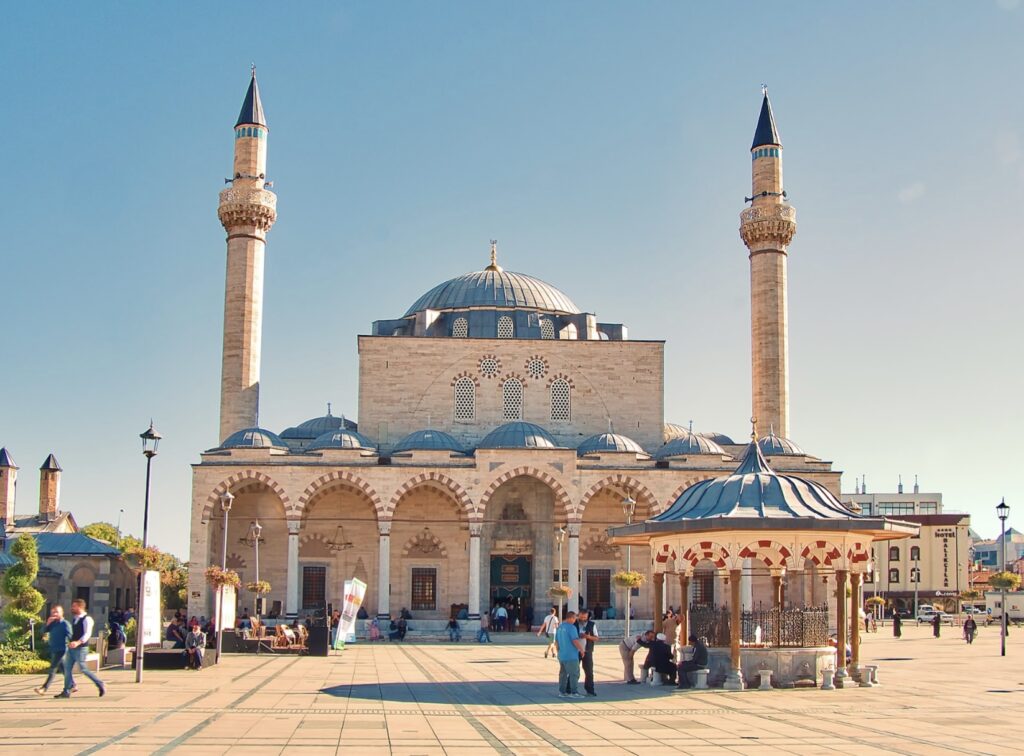
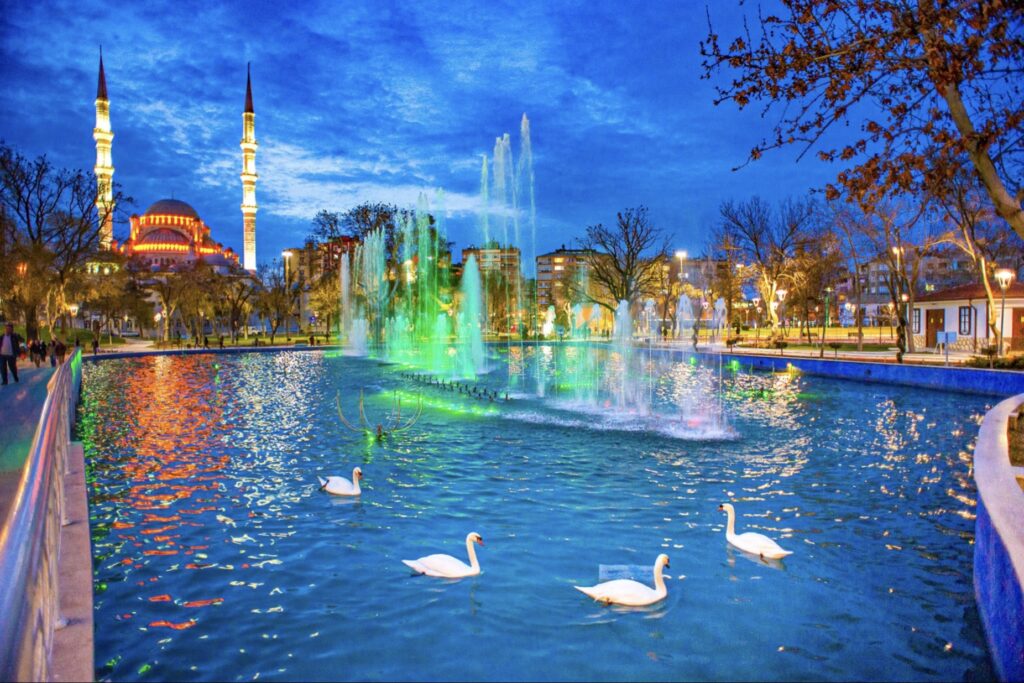
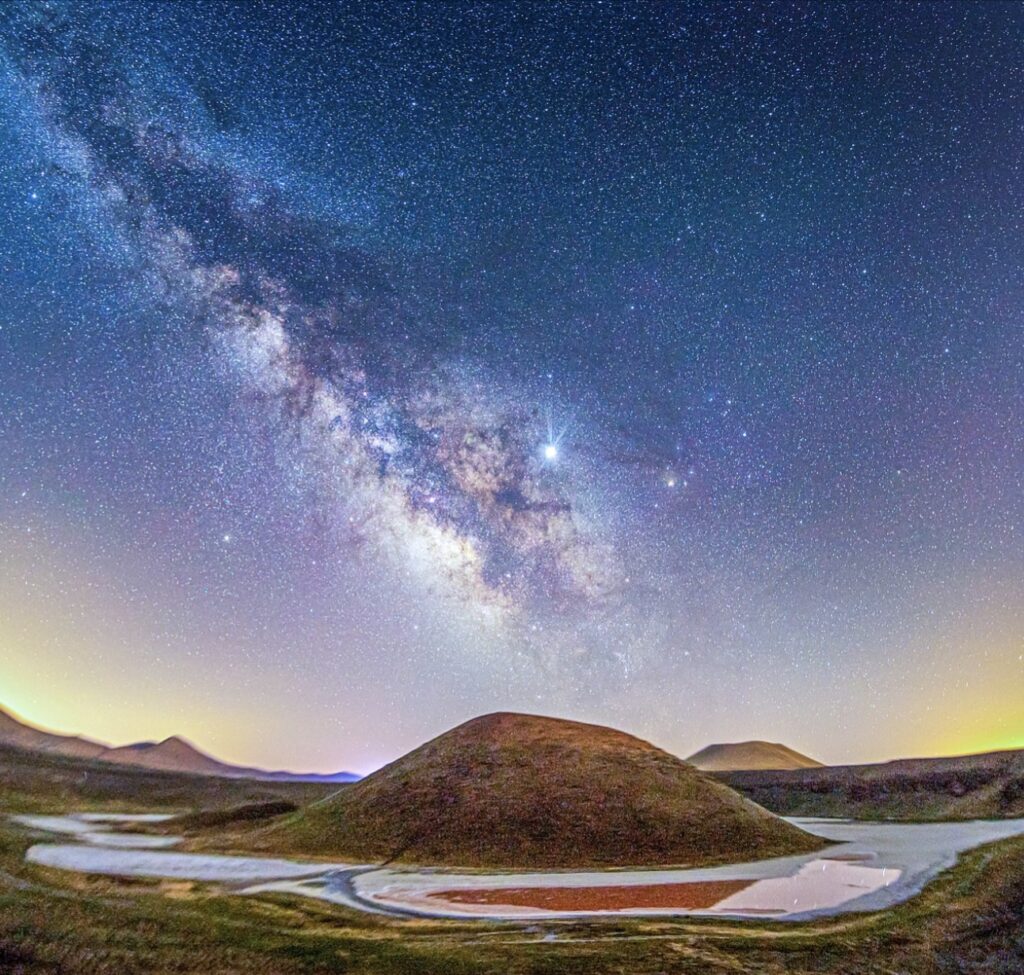
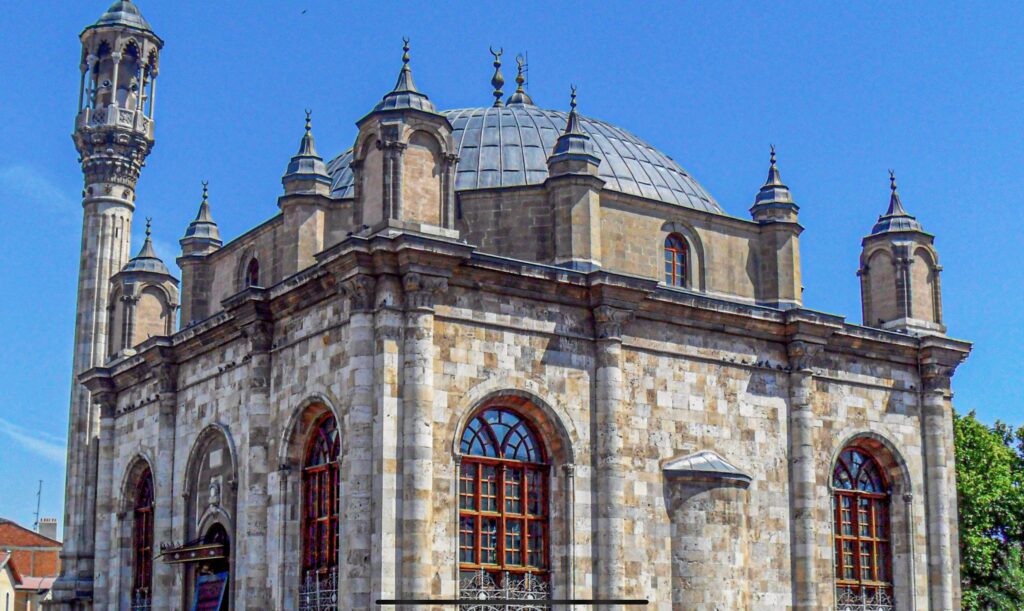
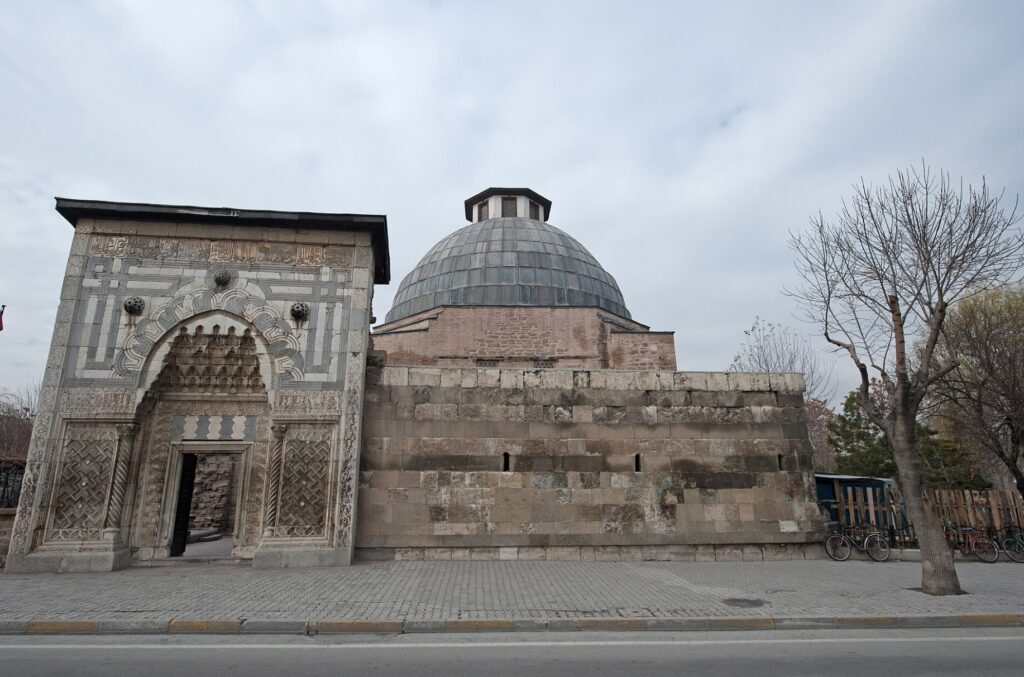
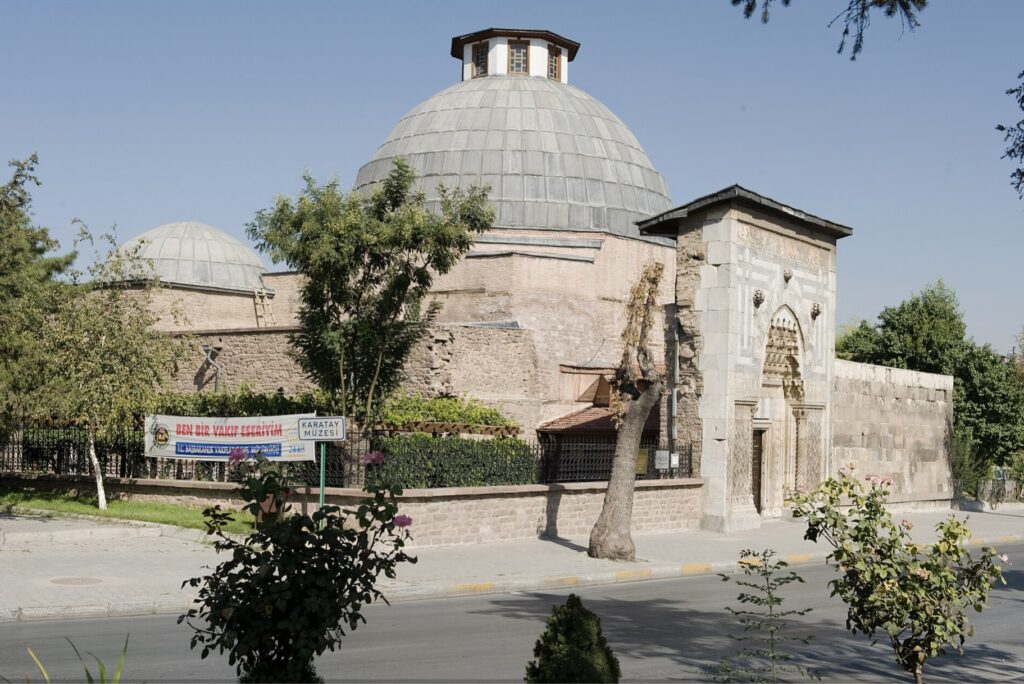
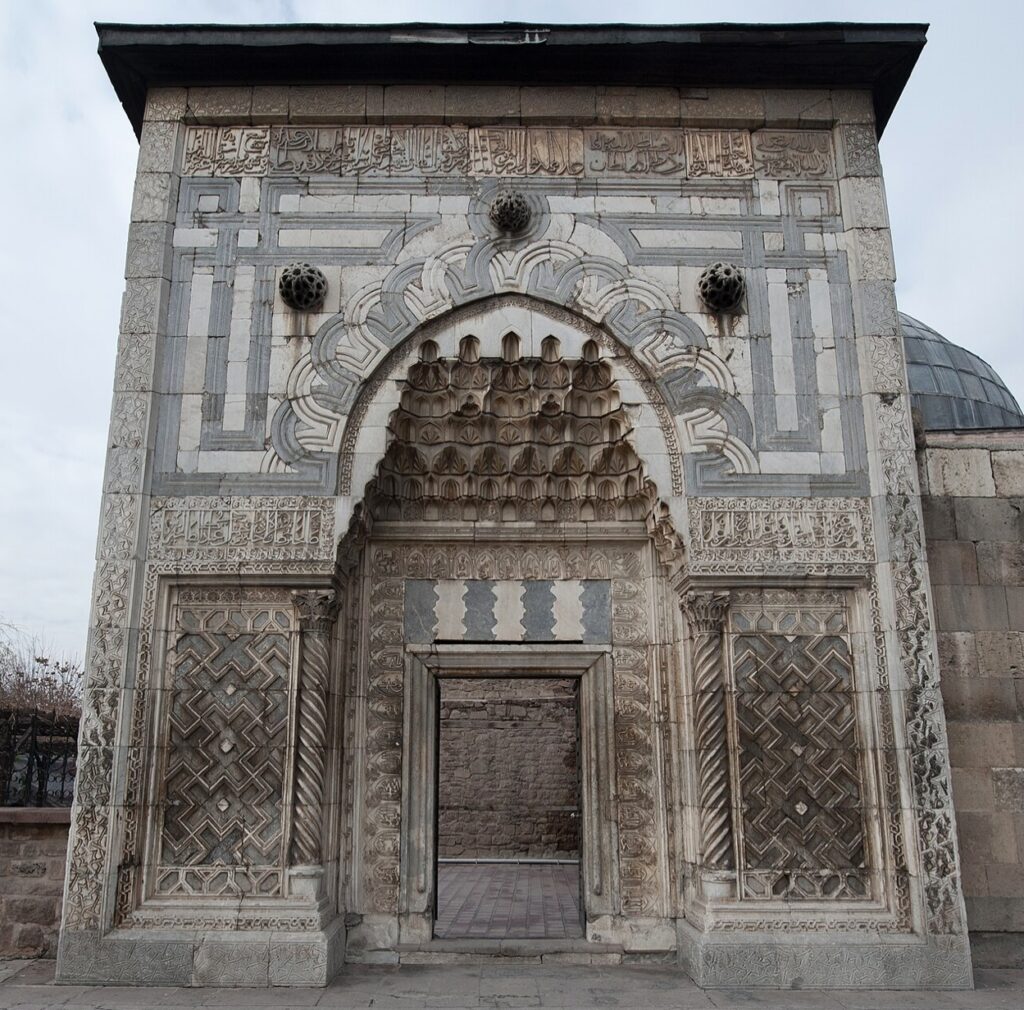
The pilgrimage to the Mevlana Museum in Konya holds significant spiritual and cultural importance for many Muslims, particularly those who follow Sufism. The museum, which houses the tomb of Jalal ad-Din Muhammad Rumi (Mevlana), is a focal point for those seeking spiritual enlightenment and a deeper connection with the teachings of Rumi. Here are the key aspects of its significance:
Spiritual Significance
- Connection to Rumi: Jalal ad-Din Rumi is one of the most revered Sufi mystics and poets in Islamic history. His teachings emphasize love, tolerance, and the mystical union with the divine. Visiting his tomb is an act of honoring his legacy and seeking spiritual inspiration from his life and works.
- Sufi Practices: For followers of Sufism, the Mevlana Museum is a place to engage in spiritual practices, such as dhikr (remembrance of God), meditation, and the recitation of Rumi’s poetry. The serene environment of the museum enhances these spiritual experiences.
- Seeking Barakah (Blessings): Many Muslims believe that visiting the tomb of a saint or a revered spiritual figure can bring blessings (barakah). Pilgrims often pray at Rumi’s tomb, asking for guidance, blessings, and spiritual growth.
Cultural and Historical Importance
- Heritage and Preservation: The Mevlana Museum is not only a religious site but also a cultural and historical landmark. It preserves the legacy of the Seljuk period and the rich tradition of Sufism in the region. Pilgrims gain a deeper appreciation of Islamic history and culture through their visit.
- Annual Commemoration: The Mevlana Festival, held annually in December to commemorate Rumi’s death anniversary, attracts thousands of visitors from around the world. The festival includes the Sema ceremony performed by the whirling dervishes, symbolizing the soul’s journey towards God. Participating in or witnessing this ceremony is a profound experience for many pilgrims.
In summary, the pilgrimage to the Mevlana Museum is a multifaceted journey that encompasses spiritual, cultural, and communal dimensions. It is a pilgrimage of the heart and soul, deeply rooted in the timeless wisdom of Jalal ad-Din Rumi.
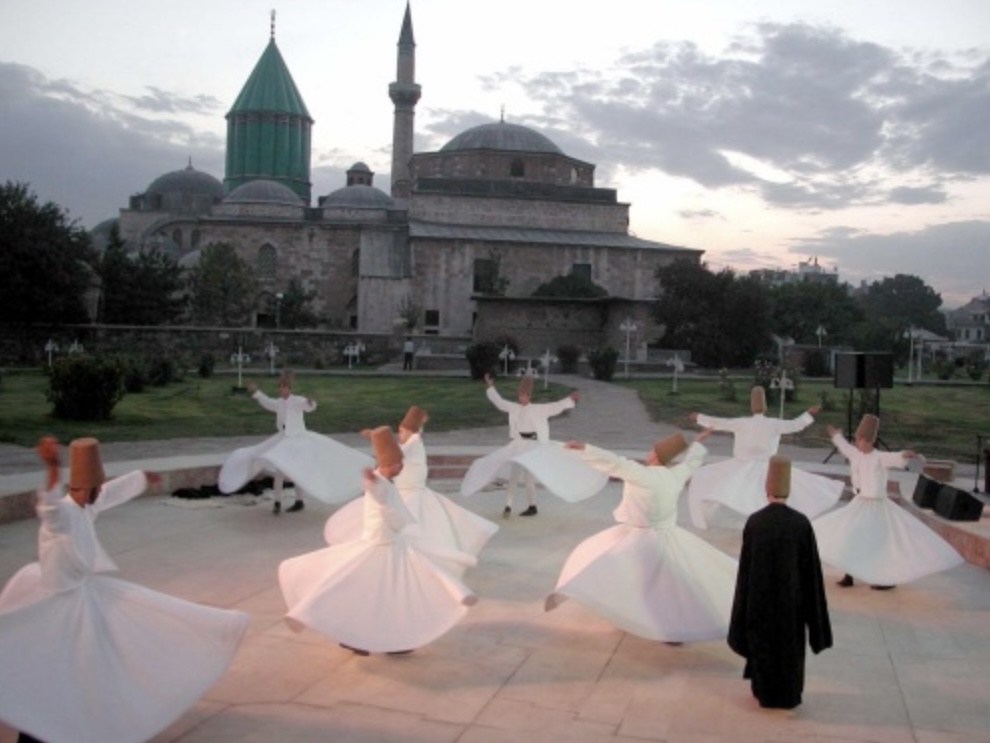
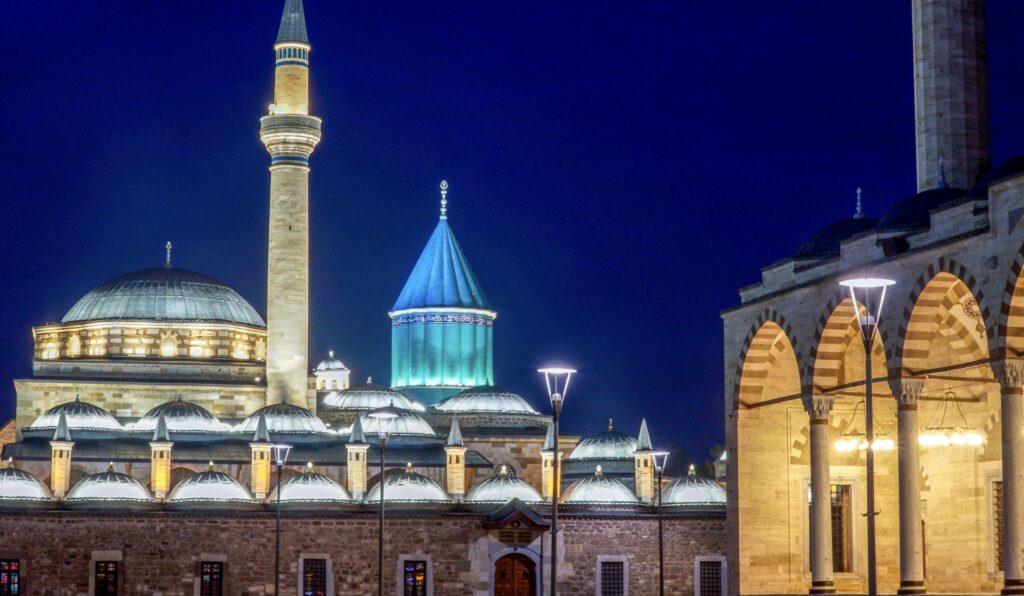
Here is a suggested one-day itinerary for visiting Konya, incorporating some of the local food specialties to give you a well-rounded experience of the city’s culture, history, and cuisine.
Morning
- 8:00 AM – Breakfast at a Local Cafe
- Start your day with a traditional Turkish breakfast at a local café. Enjoy a spread that includes fresh bread, cheese, olives, tomatoes, cucumbers, honey, and jam. Try some menemen (scrambled eggs with tomatoes and peppers) and simit (a sesame-crusted bread).
- 9:00 AM – Mevlana Museum
- Visit the Mevlana Museum, the former lodge of the whirling dervishes and the mausoleum of Jalal ad-Din Muhammad Rumi. Spend some time exploring the museum, reflecting on Rumi’s teachings, and viewing the beautiful artifacts and manuscripts.
- 10:30 AM – Alaeddin Mosque
- Walk to the nearby Alaeddin Mosque, one of the oldest mosques in Turkey. Take in the impressive Seljuk architecture and the peaceful atmosphere. Don’t forget to explore the surrounding park on Alaeddin Hill for panoramic views of the city.
Midday
- 12:00 PM – Lunch at a Local Restaurant
- Head to a local restaurant to try some of Konya’s famous specialties. Order etli ekmek, a thin and crispy flatbread topped with minced meat, tomatoes, and peppers. Pair it with ayran, a refreshing yogurt-based drink.
Afternoon
- 1:00 PM – Karatay Medrese
- Visit the Karatay Medrese, a Seljuk-era theological school that now serves as a museum. Admire the exquisite tile work and learn about the history and culture of the Seljuk period.
- 2:30 PM – Ince Minaret Medrese
- Explore the Ince Minaret Medrese, another beautiful example of Seljuk architecture. The intricate carvings and the tall minaret are particularly impressive. The medrese now functions as a museum showcasing Islamic art and artifacts.
- 4:00 PM – Sille Subaşı Village
- Take a short drive to Sille Subaşı, a historic village near Konya. Stroll through the narrow streets, visit the ancient Aya Eleni Church, and enjoy the picturesque scenery. This village offers a glimpse into the region’s diverse cultural heritage.
Evening
- 6:00 PM – Dinner at a Traditional Konya Restaurant
- Return to Konya for dinner at a traditional restaurant. Try tirit, a savory dish made with pieces of bread soaked in broth, topped with meat, yogurt, and spices. For dessert, enjoy some künefe, a sweet pastry made with cheese and soaked in syrup.
- 8:00 PM – Attend a Whirling Dervishes Ceremony
- End your day by attending a Sema ceremony, where you can watch the whirling dervishes perform their spiritual dance. This ritual is deeply moving and provides insight into the mystical Sufi traditions associated with Rumi.
Night
- 9:30 PM – Evening Stroll and Tea
- Take a leisurely evening stroll through the city center, and perhaps enjoy a cup of Turkish tea at a local tea house. Reflect on the day’s experiences and soak in the serene atmosphere of Konya by night.
Summary
This itinerary offers a comprehensive experience of Konya’s rich historical sites, spiritual heritage, and delicious local cuisine, ensuring a memorable visit to this captivating city.
